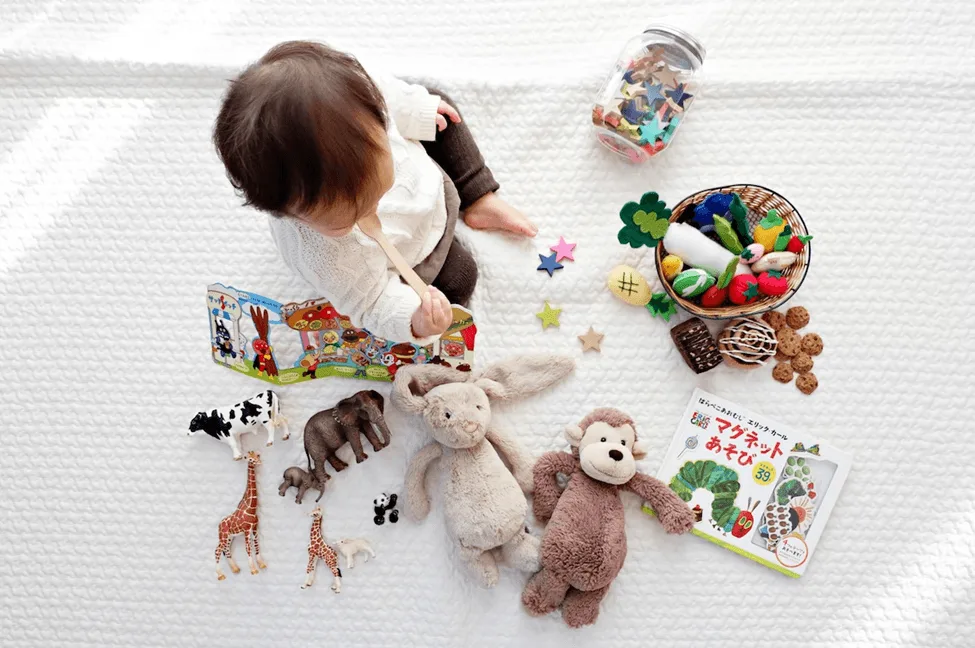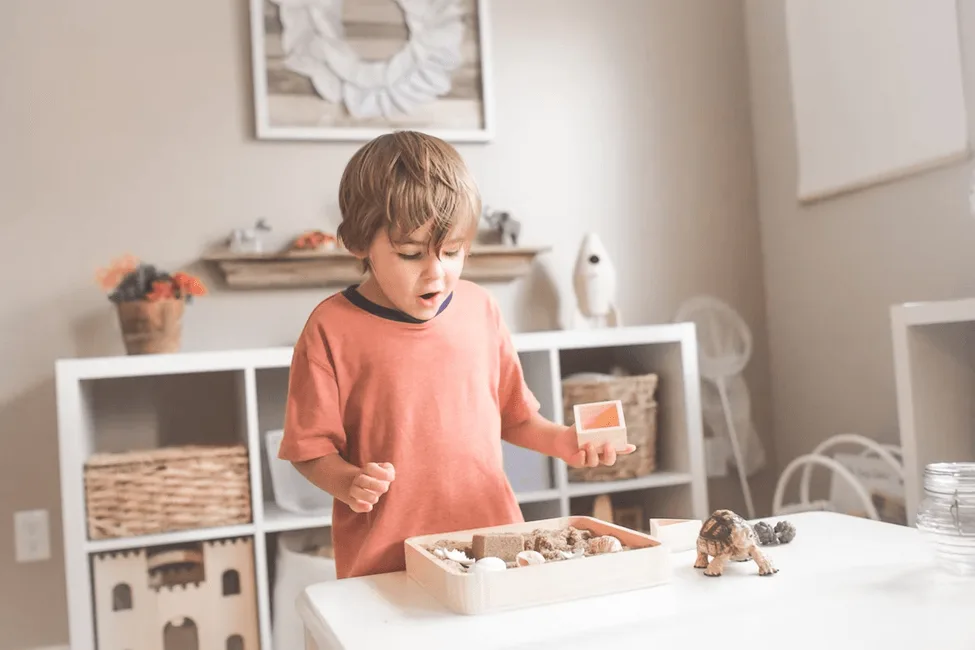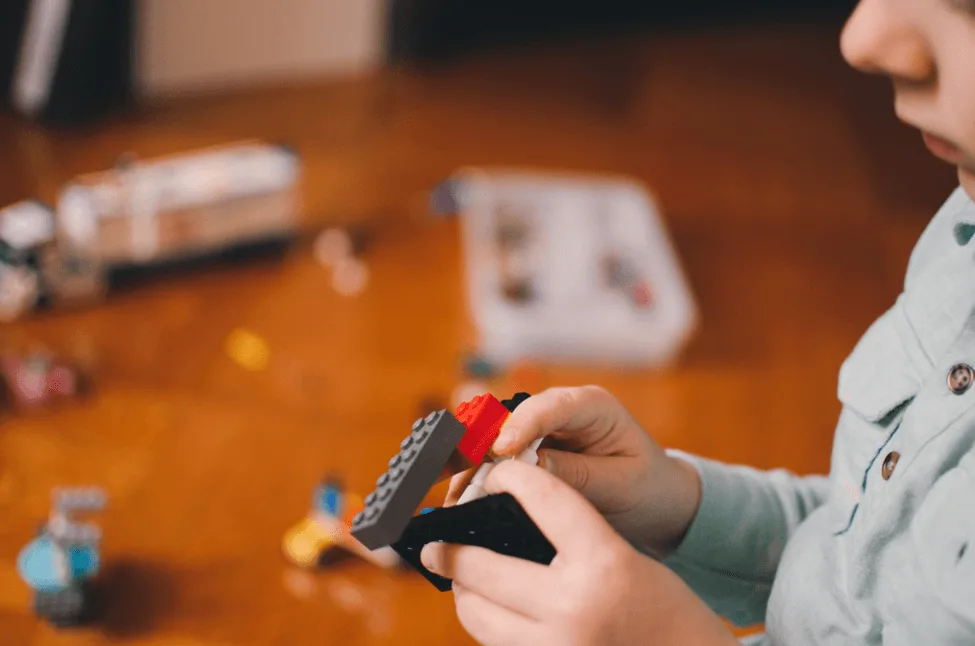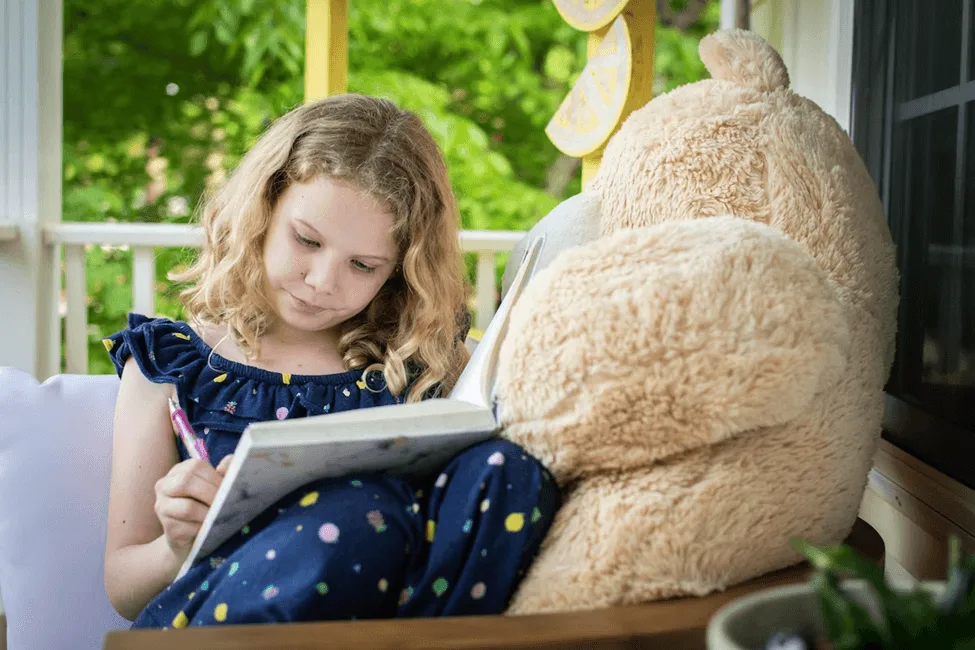A Calm Down Area is a safe space for children, where they can self-regulate strong emotions, and learn how to independently calm their body and mind.
It is more than just a quiet corner in your classroom or home – it is a soothing space where children are in control and have autonomy.
Keep reading to explore the ins and outs of this calming space for classroom and home use and to understand how to build your own calm down corner to help our children learn to regain control!

What Is A Calm Down Area or Calm Down Corner?
Calm Down Areas, sometimes referred to as cool-off zones or calm corners, are designated areas in a home or classroom where children can relax and learn ways to cope with big feelings.
Calm Areas are equipped with comforting items that can quickly help to soothe a child’s distress and teach them self regulation.
Who Is A Calm Down Corner For?
Just like emotions, calm zones are for everyone. I have used them in classrooms with 12 month-olds and I have very successfully used them in classrooms with 6-year-olds.
I know parents with teenagers who have them at home, teachers who use them in middle school, and adults who have them (“man caves” and “she sheds” are the same thing!).

Why You Should Use Calm Down Corners
As caregivers, we may be familiar with the feeling of stress and being overwhelmed. We find ways to regulate our own emotions, often called coping mechanisms.
Some of us find comfort in deep breathing and quiet, some like distractions, and others prefer to talk it out.
I’ve always found comfort in a good book and a cozy blanket. All of the skills that we use to self-regulate every day are learned behaviors. We have picked these up along the way.
So, what if we give children the chance to learn all these coping skills at a young age?
When I began my teaching career seven years ago, I quickly realized that positively teaching children how to regulate their own emotions would need to be a priority. As I was de-escalating a child’s angry tears for the fourth time that morning, I decided to take action.
After countless hours of research on blogs and Pinterest scrolling, I kept coming across the same advice; introduce a calm corner and teach the children to use it.
I gathered a few materials that I could find in my classroom, and made a very simple area. I started to talk about it with my children.
After the first couple of weeks, the children in my classroom changed. The tears slowed down, and I began to hear my 6-year-olds asking others about their feelings.
The pride I felt as one child held out their birthday candles (5 fingers) for another child to deeply breathe onto was immense.
By teaching children about their emotions and giving them ways to help themselves, I changed the entire learning environment and gave these children emotional maturity.
When Should You Use A Calm Down Corner?
We are all well-aware that young children can have very big emotions.
The Calm Down Corner can be used whenever a child feels upset, angry, over-stimulated, or sad. Some learners may need some help understanding when they should take some calm-down time.
Adults may need to direct them toward the calm corners at the start. As children become more aware of their emotions, they may independently locate and use the calming corner.
How NOT To Use A Calm Down Corner.
Calm down corners are NOT time outs and they should never be used as a punishment. Read that twice. Calm down corners are safe places for a child to go to, so that they can feel better and emotionally regulate.
The children in this zone are learning how to care for themselves- they are not in trouble. In my classroom, children who miss home, have an argument with their friend, or are feeling overwhelmed are the most likely children to use the calm corner.
It is usually their idea, and they enjoy going there. With this being said, a calm down corner should not be used to escape learning time.
6 Essential Ideas for your Own Calm Down Corner
The best advice I can give to anyone implementing a calm down corner in the classroom or at home is to introduce it slowly. It is important to have children naturally interested in this area, and recognize it as their own safe place.
Don’t Rush to Buy New Toys
Instead of simply rushing out to purchase new items or resources, stop and have a think about what your children most enjoy. Observe what toys they go to after feeling upset, and take note.
Choose about 5 resources that are currently within the classroom. This will teach kids that the zone is just for playing with the new and exciting toys

Talk about emotions every day
Use circle time to teach children about emotions. Check out our top 20 circle time activities here. My favorite book about feelings for early learners is The Color Monster, as it breaks emotions into colors.
There are lots of wonderful cross-curriculum activities that you can do alongside this book. You can find our top 10 books about emotions here (input hyperlink).
Establish boundaries for the Calm Area.
Although the Calm Area should centred around the wants of the child, some children may require more structure when starting out.
For my classroom, I made it clear that children needed to first try some deep breathing cards for 1 minute (using a sand timer) before they could choose their next activity.
This was phased out after a few weeks- but it meant that children knew it wasn’t just a place to kick back and avoid participating in their learning.
You might also find it beneficial to have different rules (only 1 person allowed, must be seated, ask permission beforehand, or have a 10-minute maximum), but you should definitely keep the rules to a minimum.
Talk to your children about the general rules- they will have loads of brilliant ideas.
Designate An Area.
Choose a quiet and safe area within your home or learning environment where your children can have space from others for the the perfect calm down corner
Decorate your calm corner
Use some cushions, blankets, beanbags or carpets to make a cozy corner of the area comforting and appealing. I like to include some familiar teddies as well. Read on to find out my top 7 must-haves.
Teach Your Children About The Resources
If you are introducing new resources, you should teach your children how to use them first. You cannot simply put a bunch of fine motor resources in a corner and call it a day. Take the time to talk to them, teach them, and role play with them.
I usually dramatically pretend that my heart is beating fast, my tummy is twisting, my face feels hot, and I feel red. I ask them how I can calm down.
I then show them how I can calm myself down using the resources in the Calm Down Area. Read on to see my top calming strategies and 7 favorite resources.
7 Resources To Put In Your Calm Down Area

A positive and effective Calm Down Area will give children the responsibility to make their own choices.
You should include them in all plans for this zone and ask them for their calm down corner ideas. Sometimes the responses may vary, so be prepared to think creatively.
I’ve had one child tell me that making clay sculptures makes them feel calm, so I put some plasticine in the Calm Down Area. Another told me that going in rocket ships to the moon makes them calm (we were singing the zoom, zoom, zoom song that day).
We chose a book about space and added some space-themed building blocks. Use your children’s knowledge to your advantage!
In my classroom, these resources stay in the Calm Down Area, and are not transported to different zones of the room.
Lego
Who doesn’t love playing with Lego? I keep it in a little basket alongside some teeny-tiny Lego pieces. These keep my children focused and engaged. Please adjust this for children under 3.
Stuffed animals
My children are obsessed with our classroom bear named Mr Snuggles. They love him, and find comfort in him. They give him big cuddles when they are sad.
Sensory jars
My students adore making these sensory jars, and they are super easy too! Here’s some ideas (input hyperlink).
Fidget Toys
Bubble poppers, fidget cubes, playdough and stress balls are all included in my Calm Down Area!
Mindfulness Shapes
Print and laminate a few different mindfulness breathing shapes
Click here to learn about mindfulness for children
Mirrors
Mirrors are an essential part of my Calm Down Area. I encourage children to look at their face to see what emotions they are displaying. I hang posters of facial expressions next to the mirrors to see if children can find a match to their face.
Books
Ask the children for help in selecting some books for their calm corner. I usually incorporate a selection of fiction and non-fiction books.

Final Words
Building your own Calm Down Area takes some time, but the end result is absolutely worth it. It is an exciting way to encourage emotional regulation for the children in your care.
They will understand themselves better and develop early problem solving skills. Just remember to take your time and introduce it slowly and with suggestions from your children.
If you have been persuaded to introduce a Calm Down Area to your home or classroom, let me know how it goes in the comments below.
For more ideas like this one, feel free to subscribe to our newsletter.
Good luck!
